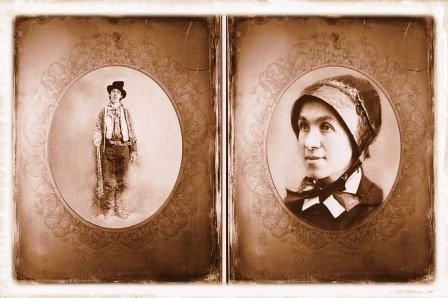Hollywood and Italian women; where are they? In general, the world has learned much about the character of women through the many decades of film and television. Various protagonists were mothers. We’ve seen the strong but self-sacrificing Kate Winslet in Mildred Pierce, the conflicted Meryl Streep in Sophie’s Choice, modest but courageous Greer Garson in Mrs. Miniver and the ambitious mother in Bette Midler’s Stella Dallas. Stalwart wives too, such as Jane in the Theory of Everything or the wife in the American Sniper, demonstrate the deep love of a spouse for her husband.
Today more often than not the females who give us a view into the world are single women. Single women are secret agents or nymphomaniacs or victims of a vicious crime. Consider Reese Whitherspoon in The Wild or the twisted anti-hero of Gone Girl. Where are screenplays about exceptional Italian women?

We did have Sofia Loren and Anna Magnani at one time. Sofia’s movie Two Women depicted a mother during WWII. She made many movies but by far Two Women was one of her most inspiring. Then we have the great Anna Magnani. Her roles were exciting, but unfortunately, even the gifted actress got sick and tired of portraying the low-class, uneducated, screaming Italian females. Not a very nice portrayal of the Italian woman.
Then we have Moonstruck. Cher is not of Italian ancestry but at least she portrayed a bookkeeper who seems intelligent enough. Lastly, we cannot forget Marissa Tomei’s portrayal in My Cousin Vinny. She is an Italian-American automotive expert/hairdresser. At least she was not depicted as the typical meaty mommas stirring a pot of gravy in front of the stove. Remember Warren Beatty’s wife, disheveled, pregnant Zohra Lampert in Splendor in the Grass, standing in front of the stove? Why are Italian or Italian-American women seen as messy hausfraus who can’t control their tempers?

Hollywood would do well learning some Italian history. Italian heroines can provide exciting, fascinating and exemplary role models for all women, not just Italian-American women. Let me begin with recent history. In the mid 1800s Maria Segale of Cincinnati, Ohio became the confidant of Billy the Kid. As a young girl living in one room with her parents and other siblings behind the father’s fruit store, compassionate Maria cared for victims of the cholera epidemic that erupted in her neighborhood. She did it, receiving no compensation. At sixteen she became a nun, renamed Sister Blandina, and is sent to the American West. There she is befriended by Billy the Kid, having nursed one of his gang members suffering from wounds received in a gun battle. Billy was so appreciative, he became her champion. Maria was the mediator between factions in the west, the emerging Catholic Church, the farmers, railway men and others. Very fertile ground for a script, I believe.

How about ancient medieval history? We’ve seen movies such as the French Tristan and Isolde and Helen and Troy but what about 12th century Italy? Italians had Constance de Hauteville (Costanza d’Altavilla) who was taken out of a nunnery and married to the emperor’s son, slid down mountains pregnant to get home to Sicily, dodged intrigues year after year and became Queen of Sicily and Empress of the Holy Roman Empire.

In the 11th century Sichelgaita, the Lombard princess, fell madly in love with Norman Robert Guiscard. They both left their spouses and were inseparable. The tall, blond middle-aged Amazon-sized woman rode into battle at her husband’s side and if necessary conducted a siege without him, such as the Siege of Trani in 1080. A good screenwriter could do much with Sichelgaita because I have only mentioned one aspect of her life and character.
We can go back further still to Rosamunda, the daughter of Cunemund, King of the Gepides. She was forced to marry Alboin, the King of the Lombards. Her husband was so cruel; he decapitated her father and made her drink her father’s blood from his skull. To humiliate her he attached the skull to his belt and walked around with it. She found herself a powerful lover and together they plotted to vanquish her husband.

Rosamunda inspired works of literature, such as Rosamund, Queen of the Lombards in English and The Swedish Rosimunda, as well as paintings, the most famous one depicting her with the skull of her father.
The year 760 BC provides another verdant field of screenplay possibilities. In this year the Romans, seeking wives, held a festival and invited another tribe, the Sabines, to attend. The Sabines did not want their women to marry with the Romans for fear of losing their dominance. The Romans feigned friendship and invited both men and women to the party. There the men were slaughtered and the women were taken away. War erupted and it was the Sabine women who fled to the field of battle and managed to get the men to cease fighting. So inspirational was this little tidbit of history that the abduction of the Sabine women and their subsequent intrusion on the battlefield has been depicted in paintings and even in film. At late as 1799 Jacques Louis David painted this historic scene as well as did Picasso in 1962. Also in 1962, a movie was released called the Rape of the Sabine Women.
Well, I believe you get the message. Italian history is loaded with storylines for women as well as men. Now if only Hollywood would see the possibilities…







